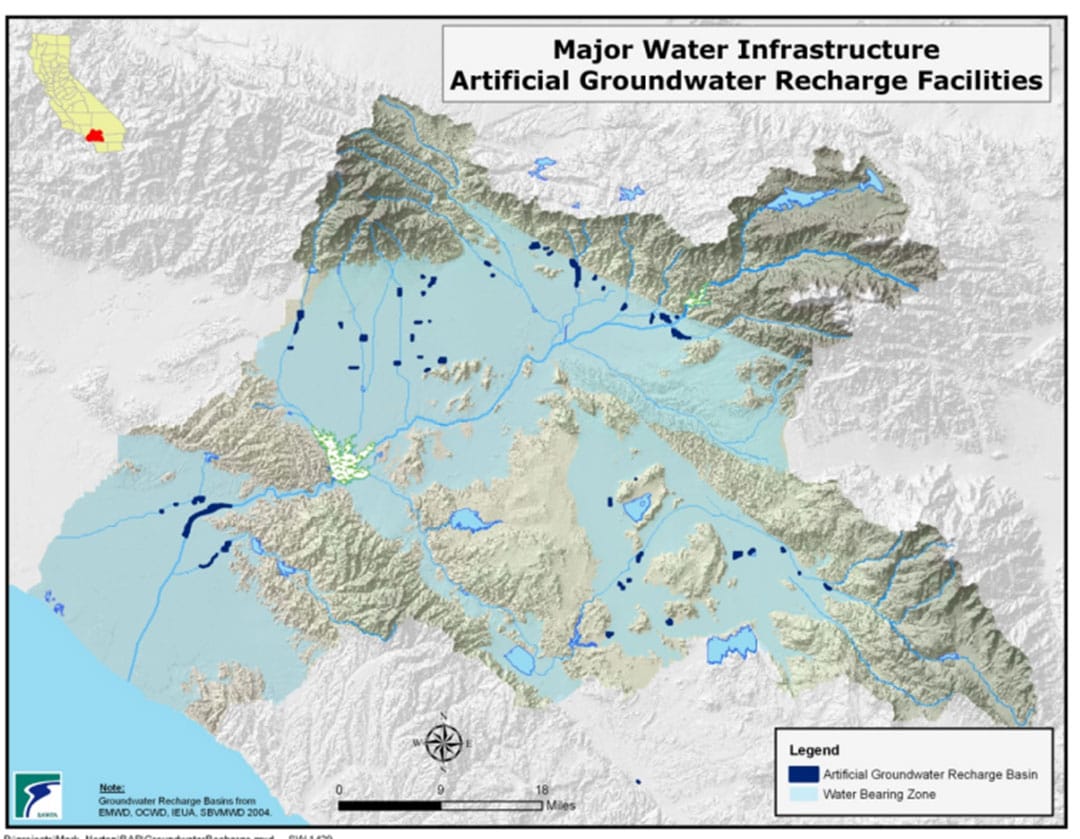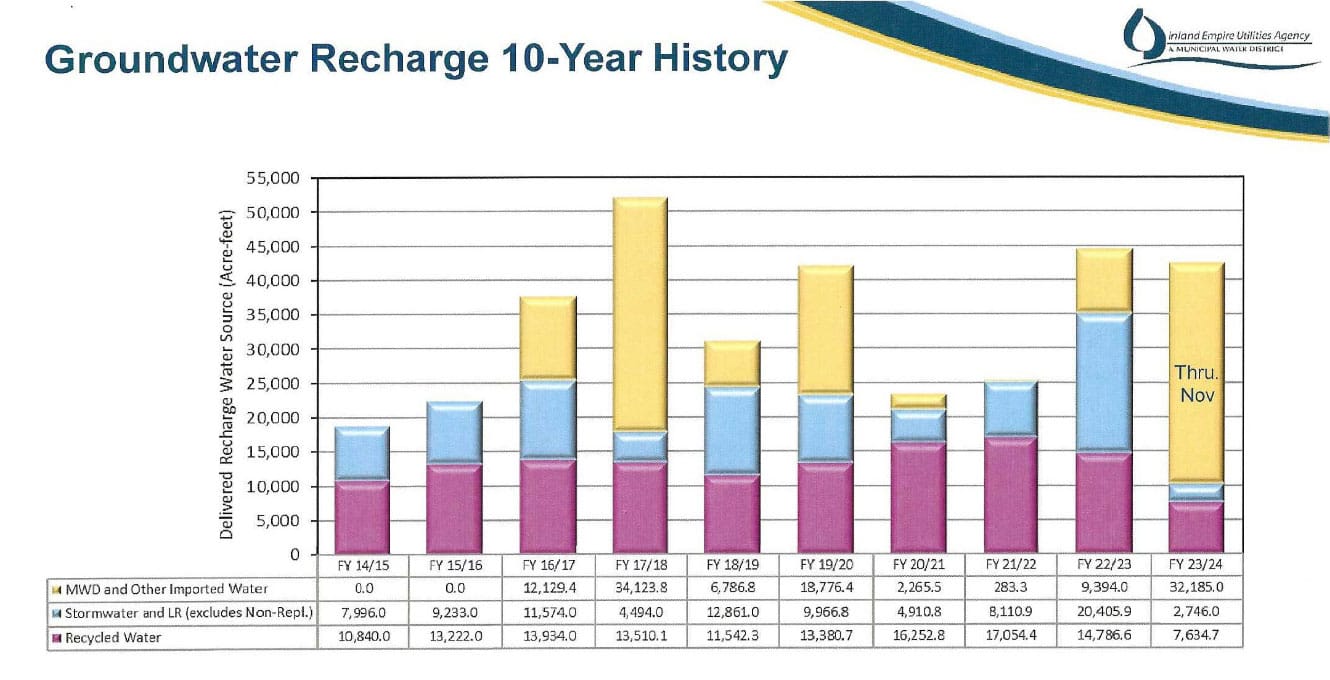Mail Model
A prompt to encourage your practice of creativity this week from Riversider and local author Larry Burns.
The Santa Ana River Basin’s unseen lifeline, groundwater recharge, is being expanded and enhanced, offering Riverside a beacon of hope for enduring water resilience.

The water utilities serving the Santa Ana River Basin area work hard to maintain the groundwater basins underlying the Santa Ana River watershed by regulating the amount of water pumped over time, recharging stormwater runoff, recharging treated wastewater, and, when available, recharging imported water. Far more recharge occurs than most people realize. The figure below shows the location of most of the larger recharge basins in the Santa Ana River watershed.

These recharge basins range in size from as small as a tenth of an acre to over 60 acres. They require regular maintenance to remove trash, unwanted vegetation, and occasionally encampments. Periodically fine silt that washes in with stormwater must be removed, and the bottom must be mechanically scarified to promote more efficient percolation of impounded water into the underlying groundwater basins.
Here in the Inland Empire, there are well over 1500 acres of recharge basins, and there are many more in Orange County. Much of Northern Orange County’s water comes from flow in the Santa Ana River. The water, consisting of both natural flow and treated wastewater from sewer treatment plants upstream, is held behind Prado Dam and only released as fast as the water can be recharged into downstream groundwater basins. In all but the heaviest flow conditions, all of the water passing Prado Dam is recharged for later withdrawal, treatment, and delivery to Orange County water customers.
The Army Corps of Engineers, which operates Prado Dam, has agreed to expand the function of the dam from purely flood control to a mix of flood control and water storage with release at a rate that allows downstream capture and use of the water. This took many years of cooperative effort and studies to accomplish, but it gives Northern Orange County a much more reliable supply of local water, which is less expensive than water imported from either the Colorado River or Northern California.
Western and San Bernardino Valley Municipal Water Districts are working closely with the Corps of Engineers to make similar changes to the operation of Seven Oaks Dam above Mentone to allow a more controlled release of stormwater flows so that downstream utilities like the City of Riverside and Western can capture and store more of the runoff. This is particularly important as our climate changes, and we see longer dry periods and more intense wet periods.
Storing treated wastewater, stormwater, and, when available and economical, imported water in our local underground basins, provides much more reliability of the water supply and saves money over depending on imported water.
The Inland Empire Utilities Authority, based in Chino, has a very strong groundwater recharge program. They capture and recharge stormwater and local runoff, treat wastewater, and, when available, import water. The table below shows their groundwater recharge history over the last ten years. As you can see, they have recharged as little as just under 20,000 acre-feet in the fiscal year 2014-15, a dry period, to a high of over 52,000 acre-feet in 2017-18, a wet period. They will almost certainly beat the previous highs in 2023-24 as they are already over 42,000 acre-feet, and the fiscal year does not end until June. Note that treated wastewater recharge is fairly stable, running between a low of less than 11,000 acre-feet to a high of just over 17,000 acre-feet, while imported water is highly variable, running from none to over 34,000 acre-feet. In 2022-23, the very wet winter of 2023 provided record stormwater and local runoff and is the reason so much imported water is available in 2023-24. I anticipate that when December 2023 and the winter of 2024 are in the books, we will see a record for imported water and, quite possibly, stormwater and local runoff recharge.

Most of our local water providers have additional groundwater recharge facilities planned to better position us for changing weather patterns and to provide more reliability and cost resiliency for our customers.
Let us email you Riverside's news and events every Sunday, Monday, Wednesday, and Friday morning. For free